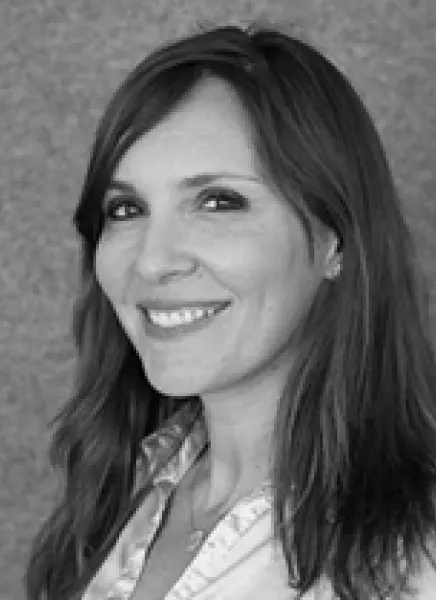Sales Efficiency: a major growth driver for SME's

While the rising awareness on sustainable development has opened a debate on the virtues of economic growth, it remains a primary concern for companies and their shareholders as key source of value creation.
In this context, financial investors first aim to support their portfolio companies in their search for the holy grail “Growth”. Although the funds’ often puts great emphasis on “buildup”, increased sales also represent another source of growth for SMEs that, if driven by a well-thought-out business strategy, may reveal itself as equally powerful.
Sparring Capital’s major objective is also to boost companies in increasing their sales by assigning tools and teams to serve this purpose. Sales resources are indeed a necessary requirement to increase sales but not the only one since a sales representative with no sales file, strategy, objective, pitch and tools will not be fully efficient. Only a full understanding of the overall business approach can lead to its success.
In this new issue, we are delving into the topic on sales efficiency and the pertaining methodology to implement. For this purpose, we have interviewed Frédéric Delord, partner at TOPS Consult, a consulting firm specialising in business development, and Sonia Milenkovic, Sales Director of IMX.
Good reading!
The Sparring Capital Team
Croised Interview with Frédéric Delord and Sonia Milenkovic Richaud

Frédéric Delord, Founder of TOPS Consult,

Sonia Milenkovic Richaud is Sales Director at IMX France
Frédéric Delord specialises in growth strategy and sales efficiency. He created TOPS Consult, an outsourced Sales and Marketing Department which provides operational support to companies (start-ups, SMEs, ISEs) in order to increase their growth (sales segmentation / targeting, structuring of the offering, etc.) and trains teams in customer relationship management.
Sonia Milenkovic Richaud is Sales Director at IMX France, a company specialising in worldwide crossborder parcel shipment and supported by Sparring Capital since October 2017. She is responsible for the company’s business development.
Frederic, as per your experience, which driving factors increase SMEs’ sales, knowing that their resources are often limited?
[F. Delord] Priority must be given to formalising and sharing the sales strategy within the company. Such strategy must then be reflected in a clearly structured “Go to Market” roadmap and a management empowering the sales teams by providing clear objectives with tailored sales tools and relevant monitoring indicators.
The challenge of an SME often lies with the company director’s lack of time to manage the sales teams and conduct new business development activities and targeting – the latter being the sinews of war. When inefficiently handled, it often drives a waste of energy translating into time loss and additional costs incurred by the SME which could then face significant challenges
In order to reduce this risk, we have developed simple tools through a streamlined process that will allow us to establish criteria in terms of attractiveness and accessibility to identify the “ideal client”. By screening the lists of prospects, we are then able to easily produce a ranking of the top 10 to 15 clients representing the sales representatives’ first targets
By establishing for each prospect (i) an average success rate, (ii) an average basket and (iii) the sales effort required to lead to an offering, we are then able to establish objectively order intake targets.
Sonia, since Sparring Capital took a stake in IMX you have come to work on your sales approach. What do you see as the key instruments of this approach?
[S. Milenkovic] In my view, before structuring a sales approach we must establish at a management level our objectives and especially our target: identifying our types of prospects. In the e-commerce sector, the FEVAD (French Federation of E-commerce and Distance Selling) had recorded more than 200,000 e-commerce sites in France. As for our worldwide parcel delivery services, we soon realised that the top 100, consisting of major industry players with well-established solutions and processes, would be a difficult market to address immediately. So we decided to target smaller businesses achieving significant international sales and, due to limited own resources, businesses that find that our solution can provide a real opportunity both in terms of shipment optimisation and additional business.
Then, when the target is set, comes the question of how to reach such target and achieve a sale. To help us assess the potential of our target market (namely e-merchants achieving export sales) and identify our relevant prospects, we have used a web tool called “mix-data”, which, by providing multi-criteria searches, allowed us to identify a pool of Sonia Milenkovic Richaud is Sales around 15,000 e-merchants to target.
Once sales targeting is clearly established, which approach is applied by the sales team?
[F. Delord] The second challenge that we address is sales training. SMEs often lack business knowledge: teams do not always have decent benchmarks and, as a result, are not comfortable with pitching to clients. The driving factor may come from the ability to better promote offerings and develop a real client relationship.
The key role of Marketing should be emphasised as it provides sales teams with the tools to better target their prospects and interest them with offerings with structured wording.
To do so, we formalise by segment a “sales book” which establishes the benefits to clients and differentiating features. This book can be produced according to a very simple template: (i) what is my pitch, (ii) how can I build trust, (iii) what are the benefits to the clients and (iv) how can I stand out in the market.
[S. Milenkovic] In addition the tools implemented must be easy to operate so that sales representatives can immediately start working on their own. TOPS Consult allowed us to build a sales pitch for e-merchants that must be mastered by sales representatives.
As regards training, we have trained the teams to be convincing in order to get to the right person, obtain key information such as the volume of parcels for export to ensure the right client has been targeted and submit a sales proposal.
The purpose being to turn a prospect into a client, how can offerings be successful?
[F. Delord] Managing the offering’s sales efficiency is indeed essential to administrate the appropriate resources and to have visibility of sales forecasting.
In this context, we should identify all the key steps required to structure the business approach (CRP = Client Relationship Process) and assess the progress achieved, which is all the more important in the event of a long sales cycle, e.g. for major clients.
Regardless of the number of steps required for the CRP (rarely above 7), one of the first key steps which helps improve the success rate is to identify the role of the persons representing my client: who really decides? who carries out payments? are there any influential persons? is there anyone against the offering? This is a critical step in the establishment of an action plan and in understanding everyone’s issues which the offering needs to address and provide a significant benefit.
[S. Milenkovic] We have sought TOPS Consult’s expertise for this sales development stage and to help us manage our base of prospects. At IMX, TOPS Consult was responsible for handling and operationally managing a team of sales representatives in charge of collecting information on prospects, and establishing and identifying decision maker(s). For instance, the key contacts essential to IMX are logistics managers, transport managers or managers of smaller SMEs.
Once a prospect has been turned into a client, we monitor clients and service quality inhouse. At the start of the client relationship during the “nursing” period, I make sure, together with my team, that monitoring is performed and once the client is satisfied and operational processes have been carried out, a dedicated department takes over to provide individual monitoring. Our challenge today is to adjust our resources to our growing number of clients to maintain the best service quality!